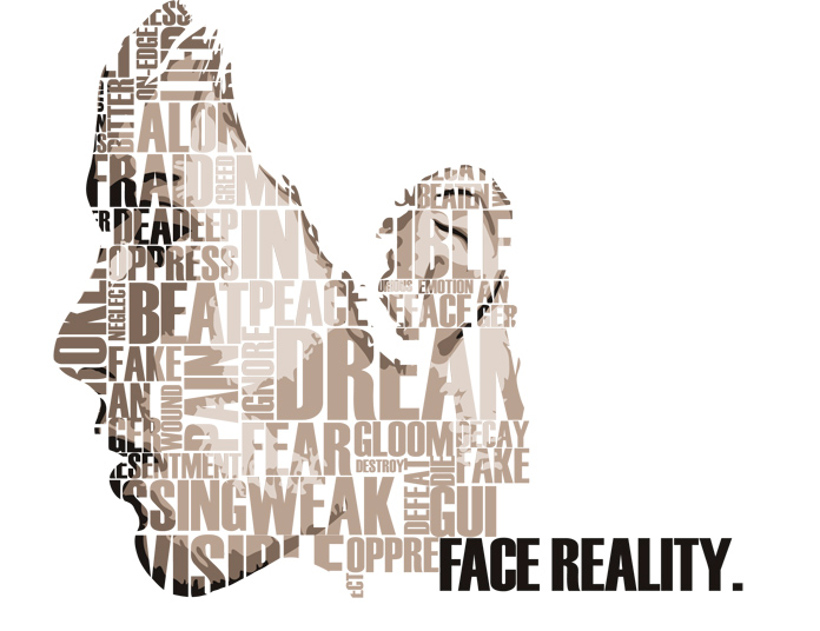Communication and Diversity
Language Arts - Grade 8
This unit of inquiry is not a recipe book but rather a launchpad to inspire new BIG IDEAS. We encourage you to use and/or modify one, or several of the BIG IDEAS below. Adapt it to the grade/ ability level of your students.
Enduring Understanding
An awareness of diversity and diverse perspectives is demonstrated through multiple forms of communication.
Guiding Questions
How do we construct meaning from literary, informational and visual texts? In what ways does advertising and promotion target a diverse population and demographics.
Mind Opening
Choose or devise practices to encourage students to open up to new experiences and ways of thinking in your classroom. For example, the MindUP in-school program.
Discovery and Inspiration:
Launch the Project
• Introduce the Theme: Present the Enduring Understanding and Guiding Questions using vocabulary that is appropriate for your grade level.
• About Vancouver Biennale: Play a short video.
• Create Project Space: Brainstorm ideas to make the project theme visual and visible using bulletin boards, and/or a project corner to share relevant materials and inquiry questions and processes.
Reference Resources:
• Introduction to Sculpture and Public Art Unit Plan for information on how art has evolved over time and the unique experience sculptures and/or public art brings
• Vancouver Biennale 2014-2016 Exhibition Theme: Open Borders / Crossroads Vancouver
• Imagine Peace (Yoko Ono, Japan/USA) from Vancouver Biennale 2005 – 2007 Exhibition.
Other Resources
View National Geographic Education: Cultural Richness
Learning to Learn:
Art Inquiry
Project images of Imagine Peace and encourage students to explore the art pieces from different angles individually and in groups. This Art Inquiry process enables the students to practice observing, describing, interpreting, and sharing visual information and personal experiences. Use the Art Inquiry Worksheet (PDF) to guide and capture their ideas and impressions. Customize or create your own Art Inquiry Worksheet as appropriate for your project and class needs.
Ask students to reflect on What viewer experience does the installation invokes when the billboards are generally reserved for the purpose of commercial advertisements.
Shared Insights
• Sharing Art Inquiry Experience: Ask students to share the Art Inquiry Worksheet responses in class.
• Artist Themes – Research: In small groups students rotate between information stations detailing the artist’s life and work. Station topics include: (1) education and training; (2) lifetime of artwork; (2) materials and processes; (3) beliefs and values. At each station, students answer questions and complete a task. For example, at the station “life’s work” students might plot the artist’s various installations on a map of the world.
• Artist Themes – Construct Meaning: View Imagine Peace online. Have students think about the power of that visual text and facilitate a discussion relating to the guiding question. Challenge studentsto share a favourite advertisement with the class and why it appeals to them, then dissect the chosen advertisements into literary, information and visual appeals.
Inquiry Challenges
Find an advertisement that targets a minimum of three or four specific demographic groups: teen, teen male, teen female, rich, environmentally responsible, elderly, ethnic specific, etc. In each advertisement give a written (one paragraph) analysis of how the advertiser has targeted the specific group. Find an advertisement that targets a demographic and compare it to the broader target group advertisement in the first challenge. Give a written (one paragraph) analysis of how the advertiser has targeted the specific group and how that differs from the broad based advertisement.
Critique and create an improved version of a selected advertisement, followed by a student-led class critique of the work. Make sure to explain an encouraging critique (‘sandwich’: This is really good…, you may want to think about this…, this is really good…)
Student Creations and Taking Action
Create a safety or information advertising campaign that targets a specific audience. Consider use of posters, website, montages, written essays/poems, film and audio, dance, visual arts or theatre.
Follow through with the Safety Poster Campaign by presenting to the Grade 8 students for rating on effectiveness. Use heightened awareness of advertising to create a poster that promotes a favourite cause (social responsibility, environment, sport, music…)
Reflection
• Teacher and students can reflect on their entire learning process by revisiting the Enduring Understanding and relevant Guiding Questions.
• How did the unit of study open inquiry, create cross–curricular learning opportunities and/or apply learning to real life situations? Has this unit of inquiry changed your opinions, values and world view? In what ways, if any, has it helped you grow as a learner?
Ideas for Cross-Curricular Access
• Mathematics: How do we construct meaning from graphics or data? How do we make data more meaningful? How are statistics used to mislead? Look at advertisements or newspaper articles where graphs have been misused to make a point (scale of the axis, perspective, etc,). Look at quoting statistics without information on how the study was carried out (⅘ doctors recommend – how many doctors were in the sample set, etc.)
• Social Studies: Look at propaganda posters through various time periods and from various countries.
• Science and Visual Arts Education: Create team posters directed at a diverse student group to raise awareness of a safety issue being discussed in Science. Use the principles of advertising uncovered in the Language Arts unit.
Credits
Written by: Terry Howe, Curriculum Consultant and School Principal (retired 2009)
Contributor: Katherine Tong
©2013 Vancouver Biennale


